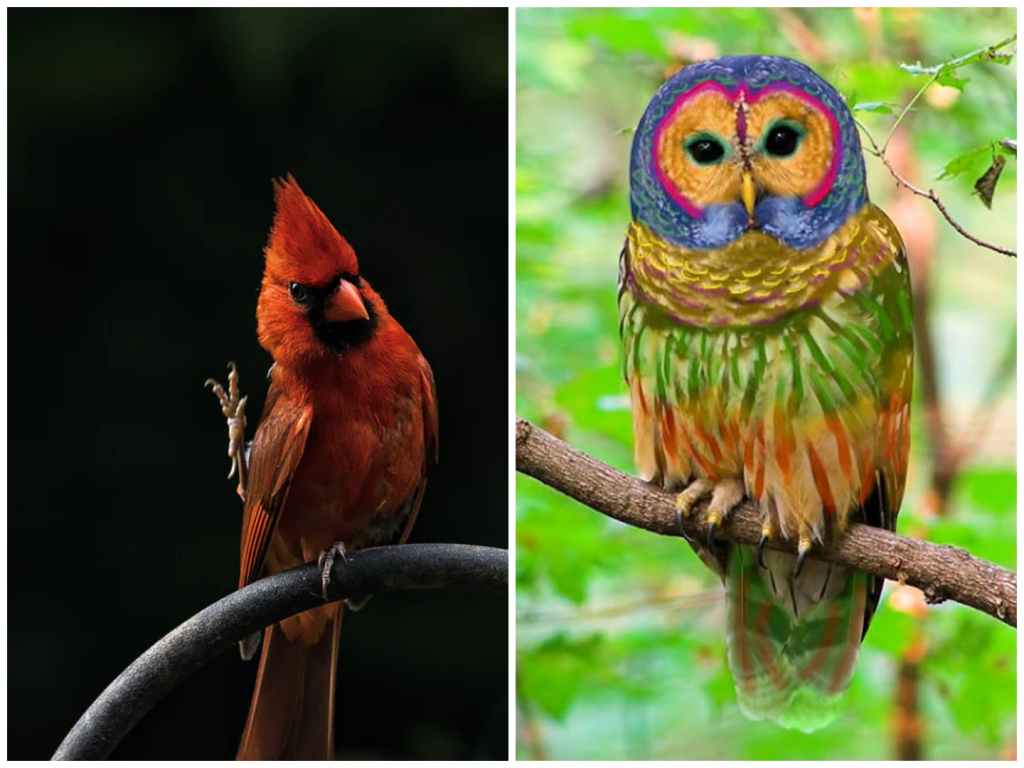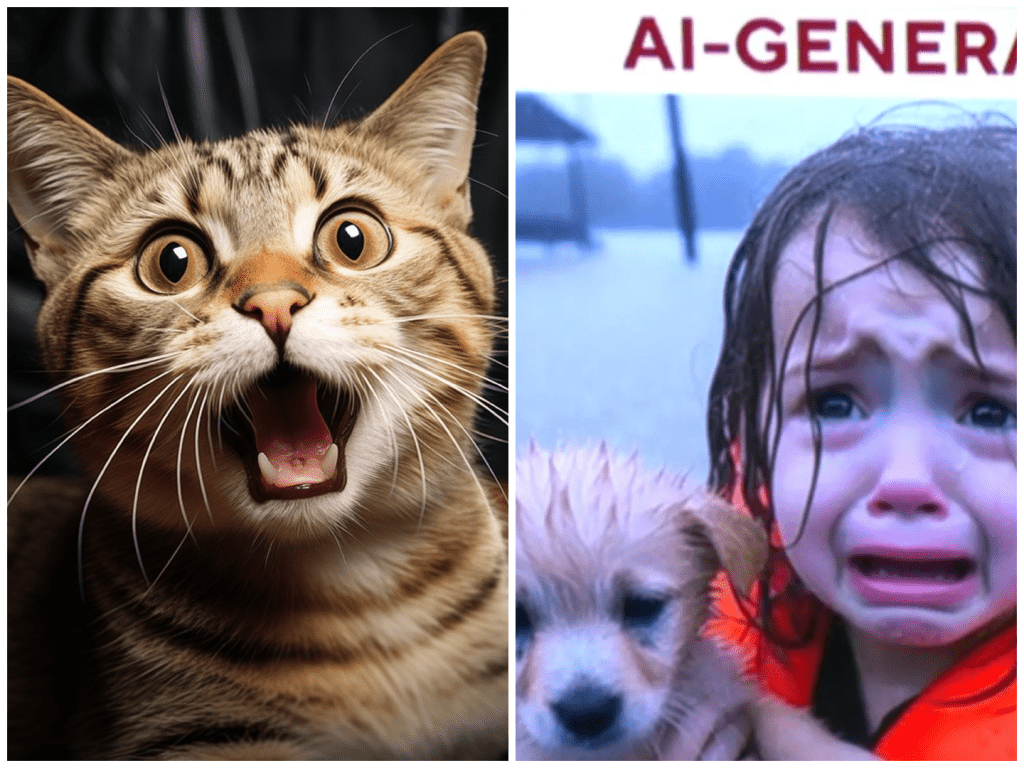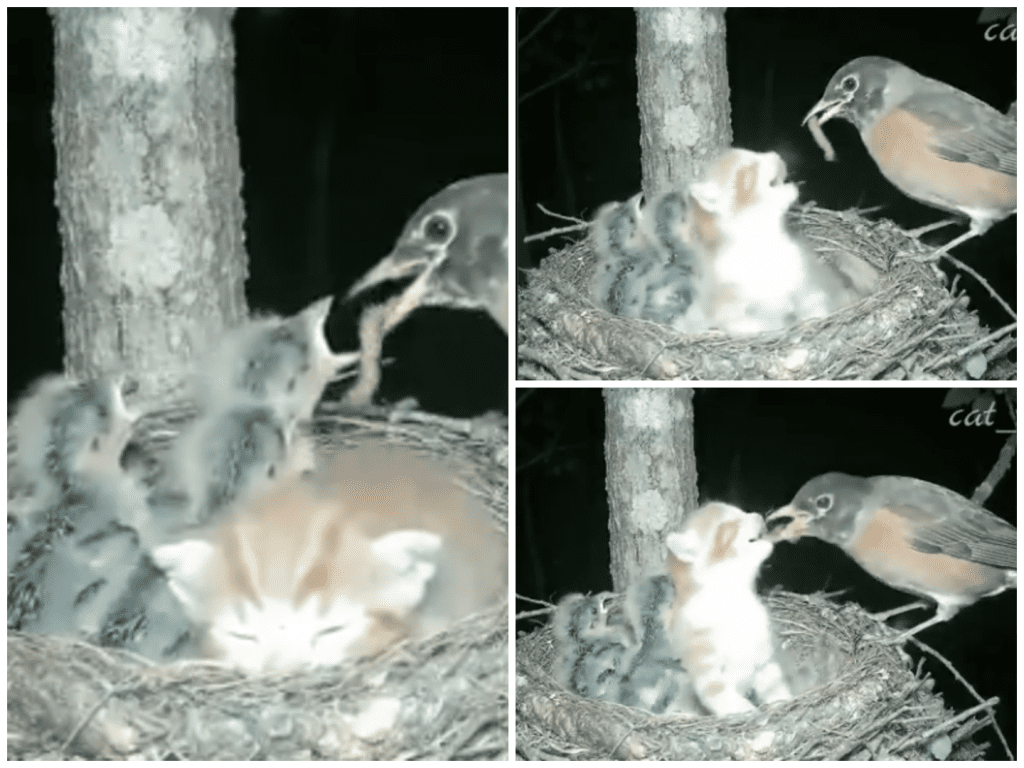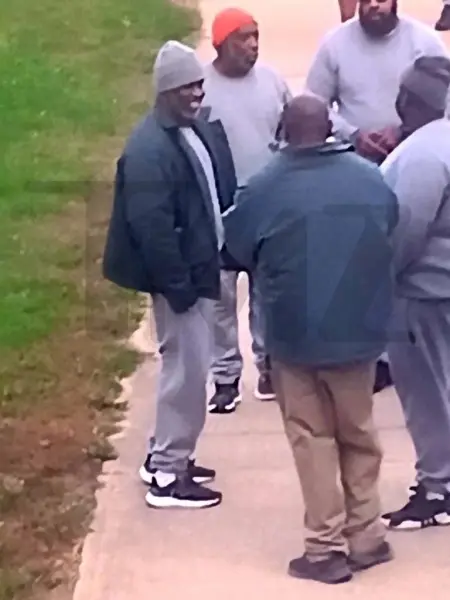This Viral Video of a Bird Feeding a Kitten Isn’t Real — But It Fooled Millions and Left Viewers in Tears Over a Fake Act of Kindness
A few days ago, a video quietly slipped into the chaos of the internet. No big announcement. No celebrity share. Just a short, silent clip showing a robin gently feeding worms to her babies in a nest. Nothing unusual—until the camera pans down and there, nestled among the chirping hatchlings, is a tiny orange kitten, eyes closed, breathing slowly. And the mother bird? She feeds it too.
It’s one of those images that stops you mid-scroll. That makes you freeze, reread, replay, and forget what you were looking for in the first place. That tiny act—a bird feeding a kitten as one of her own—felt like the rarest kind of comfort. Something so tender it didn’t need words. Something that didn’t ask for attention, just quietly demanded it by existing. The internet exploded with awe, with softness, with captions like “Nature is beautiful” and “Animals are better than humans.”
There was just one problem. It wasn’t real.

The video was AI-generated. Every frame, every feather, every flick of that worm-filled beak and twitch of a kitten’s ear was built not by nature but by neural networks and pixels. It was created using synthetic animation tools, probably by someone experimenting with animal interactions, and slipped into the social algorithm with no context. No label. No watermark. And almost no one questioned it.
I know this because I was one of those people who didn’t question it. I watched it on loop, eyes watering slightly, before sending it to three friends. One of them sent back a laughing emoji and said, “You know that’s fake, right?” And just like that, the spell broke.
What strikes me isn’t just that the video was convincing. It’s that I wanted to believe it. I needed to believe it. Because that image—a creature feeding another species’ baby out of pure instinct—is so profoundly good. So rare in the real world. And even if some small part of me knew it was too perfect, I didn’t want to ruin it.
In the past, when fake videos circulated, they were usually ridiculous. Low-quality hoaxes, sloppy Photoshop, or elaborate pranks that asked you to suspend belief. But AI has changed that. Today, fake animal videos don’t feel like jokes. They feel like dreams. And when they’re wholesome, they trigger a very specific kind of emotional reflex: the kind that fills a hole you didn’t know existed.
This isn’t the first AI-generated animal video to go viral. In the last year alone, we’ve seen videos of dogs singing lullabies, elephants saving drowning cats, raccoons making pancakes, and even AI parrots saying prayers. Most of these clips are obviously fake, but some—like this bird feeding a kitten—tiptoe into a strange, surreal space where reality blurs.

The danger isn’t just misinformation. It’s emotional manipulation. When we feel moved by something that isn’t real, does the emotion still count? Of course it does. We cry during movies, after all. But when a video is presented as documentary reality and it turns out to be AI-generated fiction, something shifts. We begin to lose our ability to trust our eyes, and more importantly, we begin to lose touch with our emotional boundaries.
I don’t think the person who created the bird-and-kitten video was trying to hurt anyone. In fact, I think they probably wanted to share something beautiful. And they did. The problem is that they didn’t say it was fake. They let us believe it was real. And in a time where the line between real and synthetic is dissolving faster than ever, that feels a little dishonest.
But maybe there’s another way to look at it. Maybe we need to think about why these videos move us so deeply in the first place. A bird feeding a kitten. A dog comforting a crying child. A cat tucking in her stuffed animal. These aren’t just cute. They’re symbolic. They speak to something we’re all missing. Tenderness. Connection. The belief that kindness can cross boundaries we thought were unbreakable.
So when AI gives us these visions, is it really deception? Or is it wishful thinking in visual form?
I still don’t know the answer. What I do know is that I watched a robin feed a kitten in a nest and I believed, for a moment, that the world was a little softer than it really is. That some kind of maternal instinct could override species and reason. That in a quiet forest somewhere, a bird saw a baby that wasn’t hers and chose love anyway.
Even knowing it was fake, I’m not angry. I’m a little sad. A little wistful. But mostly, I’m grateful I got to feel that emotion, even briefly. It reminded me what I still hope for. What I still believe in. And maybe that’s the weirdest power AI has right now—not to replace reality, but to reflect what we secretly wish it looked like.
Just maybe, if a video can trick us into feeling more compassion, more softness, more awe… then it isn’t entirely fake after all.


